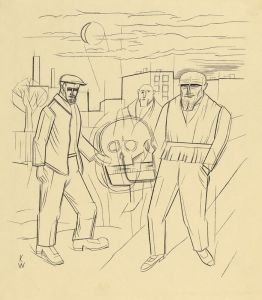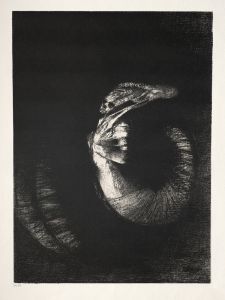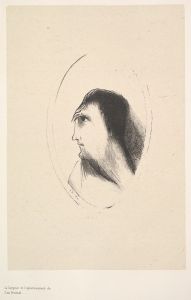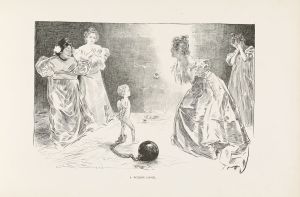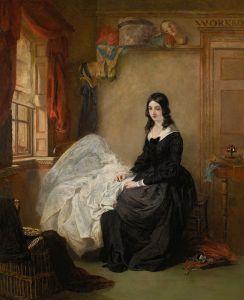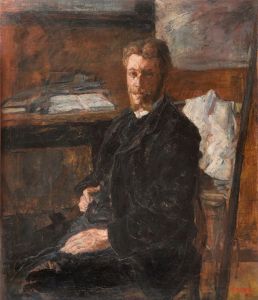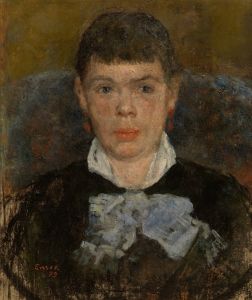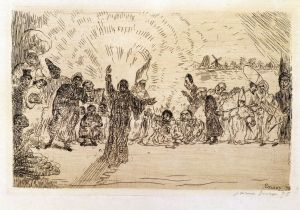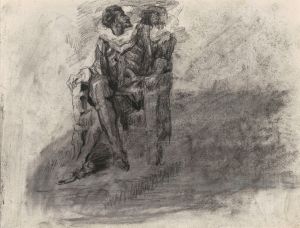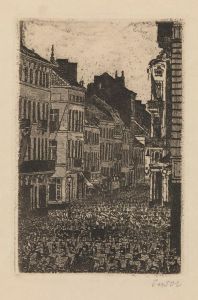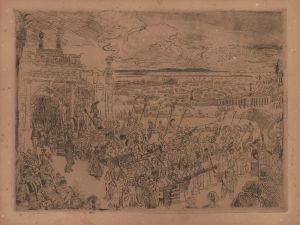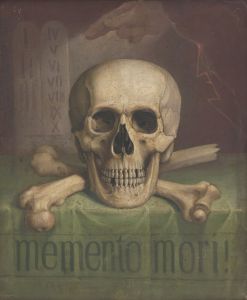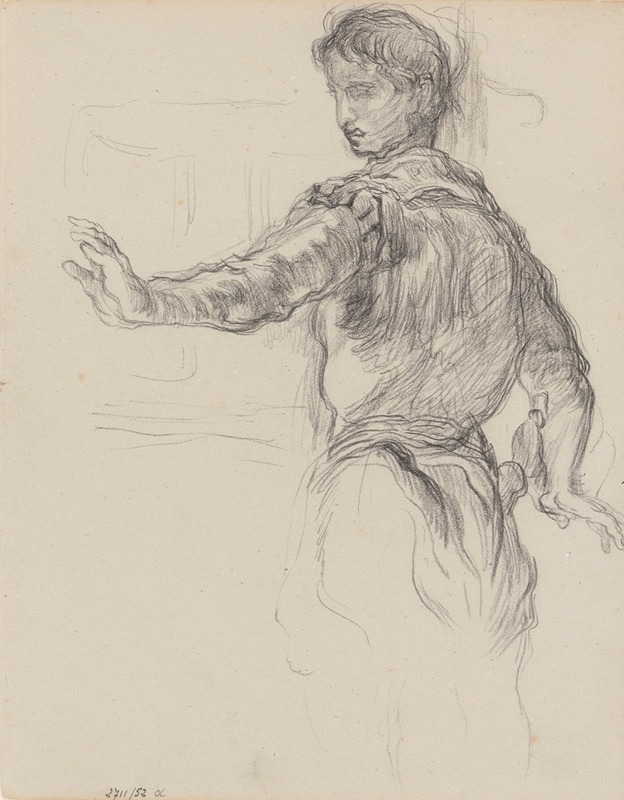
Hamlet
A hand-painted replica of James Ensor’s masterpiece Hamlet, meticulously crafted by professional artists to capture the true essence of the original. Each piece is created with museum-quality canvas and rare mineral pigments, carefully painted by experienced artists with delicate brushstrokes and rich, layered colors to perfectly recreate the texture of the original artwork. Unlike machine-printed reproductions, this hand-painted version brings the painting to life, infused with the artist’s emotions and skill in every stroke. Whether for personal collection or home decoration, it instantly elevates the artistic atmosphere of any space.
James Ensor, a Belgian painter and printmaker, is known for his unique and often avant-garde style that combines elements of symbolism and expressionism. One of his notable works is "Hamlet," which reflects his fascination with theatrical themes and the human condition. Ensor's "Hamlet" is not as widely discussed or documented as some of his other works, such as "The Entry of Christ into Brussels in 1889," but it still embodies his distinctive approach to art.
James Ensor was born in 1860 in Ostend, Belgium, and spent most of his life there. He was part of the avant-garde group Les XX (The Twenty), which included artists who were pushing the boundaries of traditional art in the late 19th century. Ensor's work often features grotesque imagery, masks, and skeletons, reflecting his interest in the macabre and the absurdity of human existence. His style is characterized by bold colors, dramatic contrasts, and a sense of theatricality.
The painting "Hamlet" by Ensor is inspired by William Shakespeare's famous tragedy. Shakespeare's "Hamlet" is a complex play that explores themes of madness, revenge, and the search for truth. Ensor's interpretation of "Hamlet" likely draws on these themes, presenting them through his unique artistic lens. While specific details about the painting's composition and elements are not extensively documented, it can be inferred that Ensor's version of "Hamlet" would incorporate his signature use of vivid colors and dramatic, almost surreal, imagery.
Ensor's fascination with masks and the theater is evident in many of his works, and "Hamlet" would be no exception. Masks, in Ensor's art, often symbolize the hidden aspects of human nature and the facades people wear in society. This aligns well with the themes of "Hamlet," where deception, appearance versus reality, and the complexity of human emotions are central to the narrative.
Throughout his career, Ensor was known for his ability to blend humor with horror, creating works that are both unsettling and thought-provoking. His paintings often challenge viewers to confront the darker aspects of life while also finding absurdity and irony in them. This duality is a hallmark of Ensor's style and is likely present in his depiction of "Hamlet."
Ensor's influence on modern art is significant, as he paved the way for later movements such as expressionism and surrealism. His willingness to explore unconventional themes and his innovative use of color and form have earned him a lasting place in art history. While "Hamlet" may not be as widely recognized as some of his other works, it remains an important part of his oeuvre, showcasing his ability to reinterpret classic themes through a modern, often unsettling, perspective.
In summary, James Ensor's "Hamlet" reflects his fascination with theatrical themes and his distinctive artistic style. Although specific details about the painting are limited, it is a testament to Ensor's innovative approach to art and his exploration of complex human emotions and societal facades.





